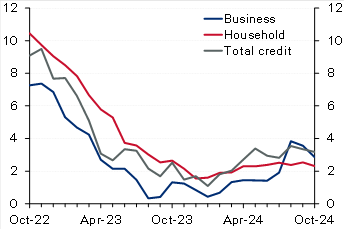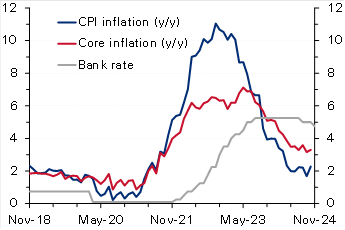When we think about newspapers, various associations come to mind. Examples include Jeff Bezos purchasing The Washington Post or William Randolph Hearst inspiring Citizen Kane. Newspapers have, to some extent, devolved into a vehicle for propaganda, as described in Walter Lippmann’s Public Opinion.
Lippmann is famously quoted for advocating the “manufacture of consent.”
Max Weber describes the economic function of newspapers:
The newspaper as an institution came into the service of commerce at an astonishingly late date.
The newspaper, as an institution, is not a product of capitalism. It brought together in the first place political news and then mainly all sorts of curiosities from the world at large. The advertisement, however, made its way into the newspaper very late. It was never entirely absent but originally it related to family announcements, while the advertisement as a notice by the merchant, directed toward finding a market, first becomes an established phenomenon at the end of the 18th century—in the journal which for a century was the first in the world, the “Times.” Official price bulletins did not become general until the 19th century; originally all the exchanges were closed clubs, as they have remained in America virtually down to the present. Hence in the 18th century, business depended on the organized exchange of letters. Rational trading between regions was impossible without secure transmission of letters. This was accomplished partly by the merchant guilds and in part by butchers, wheelwrights, etc. The final stage in the rationalization of transmission of letters was brought about by the post, which collected letters and in connection therewith made tariff agreements with commercial houses. In Germany, the family of Thurn and Taxis, who held the postal concession, made notable advances in the rationalization of communication by letter. Yet the volume of correspondence is in the beginning surprisingly small. In 1633, a million letters were posted in all England while today a place of 4,000 population will equal the number.
Max Weber, General Economic History, Collier Books, 1966 (Third Printing), page 220.
Herbert Hunt provides a useful overview of the newspaper as a political tool in his introduction to Honoré de Balzac’s Lost Illusions (French: Illusions perdues).
The first half of the nineteenth century witnessed the rapid rise to power of the periodical press. Journalism had been active — though dangerous to those engaged in it — during the Revolutionary period. Napoleon had kept the press under his thumb, as Giroudeau points out on page 235. The ‘freedom’ of the press was one of the most controversial issues both under the Restoration and the July Monarchy. Under Louis XVIII and Charles X the struggle between those who, like the Liberals and Bonapartists, wanted to keep the Revolutionary principles and gains intact, and the Conservatives of various hues, especially the ‘Ultras’, who wanted to put the political clock back, was an affair of major importance; likewise, under Louis-Philippe, the conflict between the spirit of stagnation and the parties in favour of ‘movement’. Balzac’s contention is that the majority of journalists under these three monarchs, instead of recognizing that they were called to a serious, even sacred mission, turned the Press into an instrument for self-advancement, prostituted principles to intrigue and used journalism merely as a means of acquiring money, position and power. He is reluctant to admit that there were great, responsible press organs, like Le Journal des Débats, Le Conservateur, Le Constitutionnel and, from 1824, Le Globe, which stood firm on principle; he is above all aware of the vogue which the petits journaux enjoyed after the fall of Napoleon, and of the role they played as political privateers.
The petits journaux were so-called because they were produced in smaller format than the important dailies or weeklies, which were more or less grave, staid and ponderous. They proliferated in Paris once the fall of the Empire had given a relative, though still precarious liberty to the Press — precarious because it was constantly threatened by the increasingly reactionary governments of the time. The politicians of the Right found it difficult to keep the newspapers under control even by such means as stamp-duty, caution-money, fines, suspensions and suppressions, the object of these being mainly to put obstacles in the way of would-be founders of hostile periodicals. The ‘little papers’, short-lived as they often proved to be, were much given to journalistic sharp-shooting. They preferred satire, personal attack, sarcasm and scandal-mongering to serious argument or the affirmation of ideals. They were mostly Opposition journals and were a constant thorn in the flesh of the Government. Balzac’s aim was to expose their addiction to ‘graft’, intrigue, blackmail and the misuse of the feuilleton, namely the bottom portion of the first page or other pages generally reserved for critical articles and frequently devoted to the malicious task of slashing literary reputations. Andoche Finot — the prototype of such later newspaper magnates as Émile de Girardin and Armand Dutacq, pioneers in 1836 in the founding of cheap dailies which relied on advertisement and serialized novels as a chief source of income — acquires a large share in a big daily and hands on to the equally unprincipled Lousteau the editorship of the ‘little paper’ he already owns. Balzac probably had Le Figaro chiefly in mind, a periodical which was constantly going bankrupt or being suppressed but kept popping up again under different editors. Hector Merlin’s royalist Drapeau Blanc, edited by Martainville, really existed, having been founded in 1819; so did Le Réveil. Other examples of ‘little papers’ before 1830 were Le Nain Jaume (Bonapartist), Le Diable Boiteux and Le Corsaire (both Liberal), Le Voleur, La Mode, La Silhouette, and, under Louis-Philippe, not only the phoenix-like Figaro, but also La Caricature, Le Charivari (ancestor of our English Punch), and once more Le Corsaire: a few among many. Louis-Philippe and his Cabinets were easy prey for these stinging gad-flies whose unremitting satire and innuendo remind one of the present-day Canard Enchaîné.
It is an amusing thought that, in the late twenties and early thirties, Balzac had himself been a contributor to these disreputable rags and sometimes had a hand in the running of them; for instance he had helped Philipon to found La Caricature. Throughout his career he contributed many novels in serial form to the more important newspapers, notably those founded by Girardin and Dutacq — La Presse and Le Siècle. But by the time he was writing A Great Man in Embryo he had left the petits journaux far behind him. He himself tried his luck as a newspaper-proprietor and editor: he bought La Chronique de Paris in 1836 and founded La Revue Parisienne in 1840. Both of these ventures failed. We can well imagine therefore what a large amount of bile was accumulating inside him. On the whole, reviews of his works appearing in periodicals had been hostile if not harsh. He suffered much from the disparagement of editors and critics such as Sainte-Beuve and Jules Janin respectively. He was always quarrelling with Émile de Girardin. And so he took his revenge. He had already made a preliminary attack on the periodical press in The Skin. And he followed up his attack of 1839 with his Monograph of the Paris Press (1842).
Honoré de Balzac, Lost Illusions, translated and introduced by Herbert Hunt, Penguin Books, 1971, pages xiv-xvi.
Balzac’s novel is very concerned with all aspects of journalism. For example, chapter 17 is titled “How a news-sheet is edited” and chapter 18 is a symposium on newspapers. Chapter 18 quotes a German guest who states, “I thank god there are no newspapers in my country.” (page 312). Another participant states, “In corporate crimes no one is implicated.” “A newspaper can behave in the most atrocious manner and no one on the staff considers that his own hands are soiled.” (page 314).
‘The influence and power of newspapers are only just dawning,’ said Finot. ‘Journalism is in its infancy; it will grow up. In ten years from now, everything will be subject to publicity. Thought will enlighten the world…’
Honoré de Balzac, Lost Illusions, Penguin Books, 1971, page 313.
‘Newspapers are an evil,’ said Claude Vignon. ‘An evil which could be utilized, but the Government wants to fight it. There’ll be a conflict. Who will go under? That’s the question.’
Honoré de Balzac, Lost Illusions, Penguin Books, 1971, page 313.
We should heed Vignon’s warning. Nazi Germany’s three main newspapers confirm this danger.

